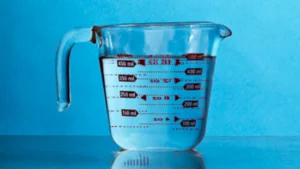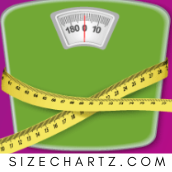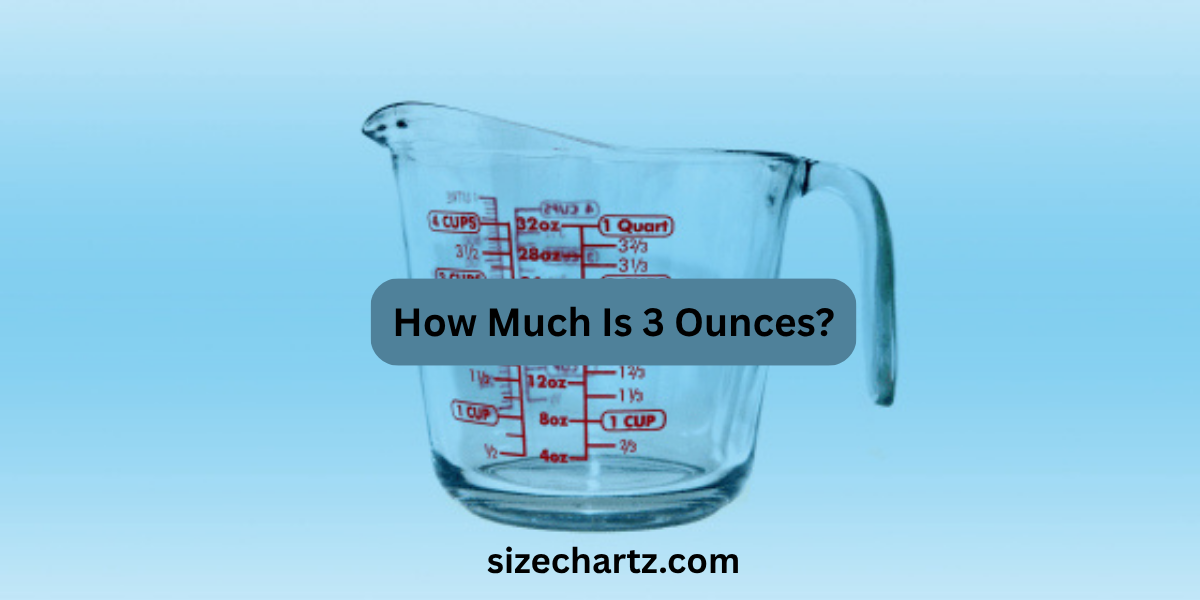Have you ever come across a recipe, postage limit, or airline rule that mentions “3 ounces” — and found yourself wondering, how much is that, really? You’re not alone.
Most people know what a pound feels like or can picture a kilogram of sugar, but 3 ounces? That’s small enough to be tricky yet important enough to matter — especially in cooking, travel, shipping, or nutrition.
Whether you’re measuring out protein for a diet, portioning ingredients for a recipe, or checking if your liquid fits TSA travel limits, understanding what 3 ounces actually looks and feels like is surprisingly useful.
This complete guide will help you:
- Understand exactly how much 3 ounces weighs (in grams, pounds, and other units)
- Learn to visualize 3 ounces using real-life examples and comparisons
- Avoid common mistakes when measuring
- Discover 11 common things that weigh about 3 ounces
By the end, you’ll not only know how much 3 ounces is — you’ll be able to estimate it confidently, even without a scale.
What Does 3 Ounces Mean? Understanding the Basics
Before we dive into real-world examples, it helps to know what an ounce actually is.
The Definition of an Ounce
An ounce (abbreviated “oz”) is a unit of weight commonly used in the U.S. and a few other countries that still rely on the Imperial measurement system.
- 1 ounce (oz) equals 28.35 grams (g).
- Therefore, 3 ounces = 3 × 28.35 = approximately 85 grams.
In pounds, since 1 pound = 16 ounces:
3 ounces = 3 ÷ 16 = 0.1875 pounds.
So, if you’re trying to convert 3 ounces into metric, remember:
3 ounces = 85 grams = 0.19 pounds (roughly).
Weight Ounces vs Fluid Ounces — Not the Same Thing
One of the biggest mistakes people make is confusing weight ounces (mass) with fluid ounces (volume).
- Ounces (oz) = weight or mass (used for solids like meat, cheese, or metals).
- Fluid ounces (fl oz) = volume (used for liquids like water, milk, or oil).
If you have 3 fluid ounces of water, that’s about 89 milliliters. However, 3 ounces by weight of water would also be about 3 fl oz because water’s density is close to 1 gram per milliliter — but that’s not true for other liquids like oil, honey, or syrup.
Why 3 Ounces Matters in Everyday Life

Understanding what 3 ounces means isn’t just about numbers — it’s practical knowledge that helps in many areas:
1. Cooking and Portion Control
Nutrition guides often refer to 3 ounces of meat or fish as a single serving size. Knowing what that looks like helps control calories and maintain balanced meals.
2. Travel and TSA Rules
Airline carry-on liquid rules usually allow up to 3.4 fluid ounces (100 ml) per container. Knowing how much 3 ounces actually is helps you pack efficiently.
3. Shipping and Postage
Many postal services charge based on weight. Knowing when an item is around 3 ounces can help you estimate shipping costs or choose packaging wisely.
4. Product Packaging
Manufacturers often sell products in 3-ounce portions — from snack bags to small toiletries — so you might already handle 3-ounce items daily without realizing it.
How Much Is 3 Ounces in Different Units?
Let’s break it down simply so you can convert 3 ounces in any situation.
| Unit | Equivalent to 3 Ounces |
|---|---|
| Grams | 85.05 grams |
| Pounds | 0.1875 pounds |
| Kilograms | 0.085 kilograms |
| Fluid ounces (for water) | About 3 fl oz |
| Milliliters (for water) | 89 mL |
So next time you see a label that says “3 oz,” you can think of something that weighs roughly 85 grams — a small apple, a deck of cards, or two large eggs.
11 Common Things That Weigh About 3 Ounces
Here’s where we bring 3 ounces to life. These real-world examples make it easy to visualize and remember how much 3 oz really is.
1. A Deck of Playing Cards
A standard 52-card deck weighs about 3 ounces. This is one of the most popular comparisons — and it’s even used by dietitians to describe a 3-ounce portion of cooked meat.
2. Three AA Batteries
Each AA battery weighs about 1 ounce. Line up three of them, and you have a total of approximately 3 ounces — small but surprisingly dense.
3. A Small Apple
A small apple (about 2.5 inches across) typically weighs around 3 ounces. So next time you grab one from a fruit bowl, that’s your visual reference for 3 oz.
4. Two Large Eggs
Two large raw eggs combined usually weigh around 3 ounces — an easy food-based comparison for kitchen use.
5. A Small Bar of Soap
Travel-size bars or standard hotel soaps are designed to weigh about 3 ounces, making them convenient for both travel and home use.
6. Three Slices of Sandwich Bread
Most sandwich bread slices weigh roughly 1 ounce each, so three slices = 3 ounces. If you’re counting carbs or calories, this is a handy benchmark.
7. 30 U.S. Pennies
Each penny weighs about 2.5 grams. You’d need about 34 pennies to reach 85 grams, or 3 ounces. It’s a fun way to feel the weight using something you already have.
8. A Small Onion
A small onion — smaller than a baseball — weighs about 3 ounces before peeling. This is great to remember for cooking and recipe portioning.
9. A Quarter Cup of Honey
Because honey is dense, a quarter cup weighs roughly 3 ounces. This example is perfect for bakers and anyone experimenting with sweeteners.
10. A Pocket Notebook
Many small spiral notebooks or pocket journals weigh around 3 ounces, depending on paper thickness and cover type.
11. A Travel-Size Bottle of Lotion or Sanitizer
Most TSA-approved travel bottles are 3 fluid ounces (about 89 ml). While that measures volume, a full bottle weighs roughly the same amount by total weight — making it another good reference point.
How to Estimate 3 Ounces Without a Scale
You won’t always have a kitchen scale handy, so here’s how to estimate:
Visual Cues
- 3 oz of meat or fish ≈ size of a deck of cards or the palm of your hand (not counting fingers).
- 3 oz of cheese ≈ three thumb-sized cubes or a pair of dice.
- 3 oz of cooked rice or pasta ≈ half a cup.
Handy Conversion Tip
Remember: 1 oz ≈ 28 grams. So for 3 oz, think roughly 85 grams. You can round slightly when eyeballing — exact precision isn’t always necessary.
Common Mistakes People Make When Measuring 3 Ounces
Even professionals can get confused with small weights. Avoid these pitfalls:
- Mixing up weight ounces and fluid ounces — Always check the context.
- Not accounting for water loss — Cooked meat weighs less than raw because moisture evaporates.
- Including packaging — Always subtract container weight for accuracy.
- Overestimating visually — What looks small can weigh more than you think (dense foods like nuts or chocolate).
- Not taring scales — Always zero your scale before placing food or items on it.
Practical Uses for Knowing What 3 Ounces Weighs
Cooking and Nutrition
Knowing how much 3 ounces is helps control portion sizes and calorie intake. For instance:
- 3 oz of cooked chicken = about 25 grams of protein.
- 3 oz of salmon = about 180 calories.
- 3 oz of lean beef = roughly 210 calories.
If you’re meal prepping or dieting, understanding these measurements can make a big difference.
Shipping and Packaging
For letters and parcels, weight thresholds often affect postage. If your envelope weighs under 3 ounces, it might qualify for a lower rate. Having a sense of weight helps avoid overpaying.
Travel Essentials
TSA rules allow liquid containers up to 3.4 fl oz. Knowing what 3 ounces feels like helps you pack efficiently without getting stopped at security.
Estimating 3 Ounces for Different Materials
| Material | Volume That Weighs 3 oz (Approx.) |
|---|---|
| Water | 3 fl oz (about 89 mL) |
| Cooking Oil | 3.3 fl oz |
| Honey | ¼ cup |
| Flour | ¾ cup |
| Sugar | ⅓ cup |
| Butter | ⅔ stick (about 6 tbsp) |
These estimates vary slightly with temperature and texture, but they’ll help you approximate without scales.
Pro Tips for Measuring Small Weights Like 3 Ounces
- Invest in a digital kitchen scale — inexpensive and extremely accurate.
- Learn to convert — memorizing that 3 oz = 85 g is a game changer.
- Use familiar objects — like a deck of cards or small fruit, for quick estimation.
- Check serving labels — packaged foods often list serving weights; compare them to 3 oz to train your eyes.
- Measure once, memorize forever — weigh something once, then remember how it looks and feels.
Frequently Asked Questions (FAQs)
Q1: How big is 3 ounces of meat?
About the size of a deck of cards or the palm of your hand. It’s roughly one serving according to many dietary guidelines.
Q2: How much is 3 ounces in cups?
For water, 3 ounces = about ⅜ cup (a bit less than half a cup). For dry goods, it depends on density — flour, sugar, or nuts all vary.
Q3: Is 3 ounces a lot?
Not really — it’s a small but noticeable amount. Think of half a regular chocolate bar or a small apple.
Q4: How much does 3 fluid ounces of water weigh?
Because water’s density is 1 g/mL, 3 fluid ounces (89 mL) weighs about 3 ounces exactly.
Q5: How can I measure 3 ounces without a scale?
Use visual comparisons: palm-sized meat = 3 oz, 2 eggs ≈ 3 oz, 3 slices of bread = 3 oz.
Q6: Is 3 ounces of chicken cooked or raw?
Dietary guidelines usually refer to cooked weight. Raw meat will weigh more before moisture loss.
Q7: Why does 3 ounces matter for airlines?
TSA liquid limits are about 3.4 fl oz (100 ml). That’s roughly the same size as most small travel toiletry bottles.
Conclusion
Now that you know how much 3 ounces is — both by the numbers and by feel — you can confidently estimate small weights in daily situations.
Remember:
- 3 ounces = 85 grams = 0.19 pounds
- Roughly the weight of a deck of cards, two large eggs, or a small apple
- Common in cooking, dieting, shipping, and travel rules
Whether you’re meal-prepping chicken, mailing a small package, or packing your toiletries, understanding 3 ounces helps you make smarter, more accurate decisions.
The next time you see “3 oz” on a label or recipe, you won’t have to wonder — you’ll know exactly what that means.


Leave a Reply